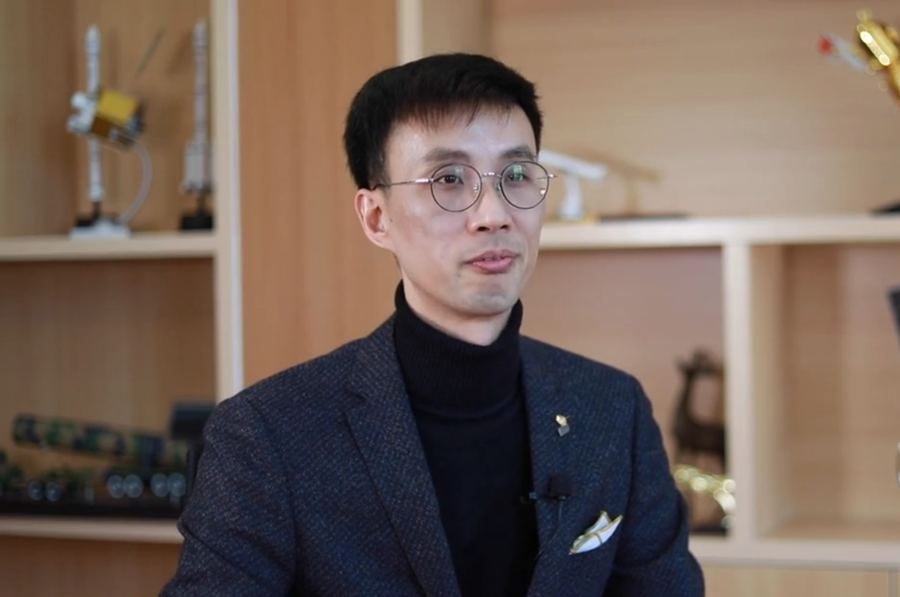Better monitoring of carbon needed

Zhang Xingying, a member of the 13th National Committee of the Chinese People's Political Consultative Conference and also deputy head of the National Satellite Meteorological Center, shares his thoughts on climate change during an interview. [Photo/chinadaily.com.cn]
A more accurate method for monitoring carbon emissions is needed to help with the government's emission reduction work, a national political adviser said.
Zhang Xingying, a member of the 13th National Committee of the Chinese People's Political Consultative Conference and also deputy head of the National Satellite Meteorological Center, said that scientists around the world are working to develop a more accurate method for calculating carbon emissions, based on the concentration of carbon dioxide in the air as recorded by in situ measurement and satellite remote sensing.
"Carbon emission data is usually taken as the sum of the amounts generated through energy consumption, industrial production, agriculture, forestry, and waste disposal. However, calculations made by different institutions turn out quite differently," he said.
Under the framework of the World Meteorological Organization, China's meteorological service has been monitoring carbon dioxide concentrations since 1994.
Sixty observation stations have been built across the country. In addition, China uses meteorological satellites to carry out remote sensing detection.
In some areas, the meteorological service also conducts experiments using aircraft and sounding equipment to detect carbon dioxide, Zhang said.
Such a system can help the government comprehensively understand emissions in different sectors, said Zhang, whose main work involves space observation on global atmospheric composition and its impact on climate and environment.
"A monitoring and calculation system evaluates emission reduction results and provides a scientific basis for macro-control and decision-making," he said.
"As for the public, it will give them a better understanding of carbon emitted by each industry, which will encourage cooperation with the government in carrying out reduction plans and policies."
Gaps in economic development should be taken into account when governments allocate carbon emission allowances, Zhang said.
"Stricter emission reduction standards should be set for regions with better economic development because they also have a history of producing higher emissions," he said.
"More carbon emission allowances should be given to western regions with lower per capita incomes and lower historical records of emissions. This would then allow eastern provinces to buy emission allowances from western regions to offset their emissions."
Increased greenhouse gases emissions have caused global warming. A report by the World Meteorological Organization said that last year, the average global temperature was about 1.11 C higher than during the preindustrial period.
Data from the 2019 China Greenhouse Gas Bulletin released in July said that global carbon dioxide concentrations reached 411.4 parts per million, a measure of the amount of a gas in the air.
That's the highest since China began to record the data in the 1990s, and much higher than the 280 ppm estimated during the preindustrial period before 1750, the China Meteorological Administration said.
"This has led to more extreme weather events, including Storm Eunice that recently swept northern Europe and the exceptionally heavy rainstorm that hit Central China's Henan province in July," Zhang said.
"These events pose a severe challenge to both the world's and to China's food security, water resources, energy provision and economic development."
Copyright © The National Committee of the Chinese People's Political Consultative Conference.
All rights reserved. Presented by China Daily.
京ICP备08100501号-1

